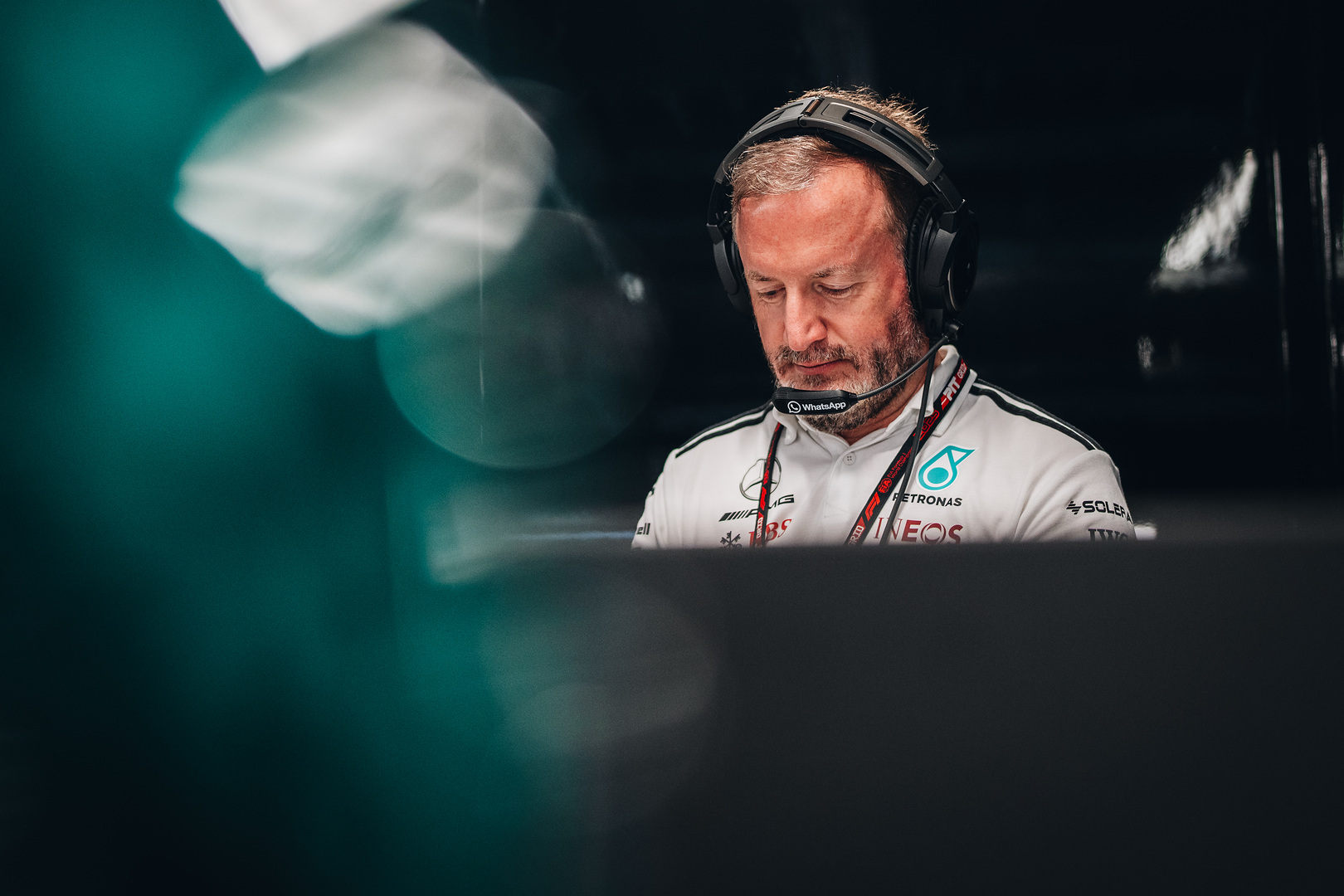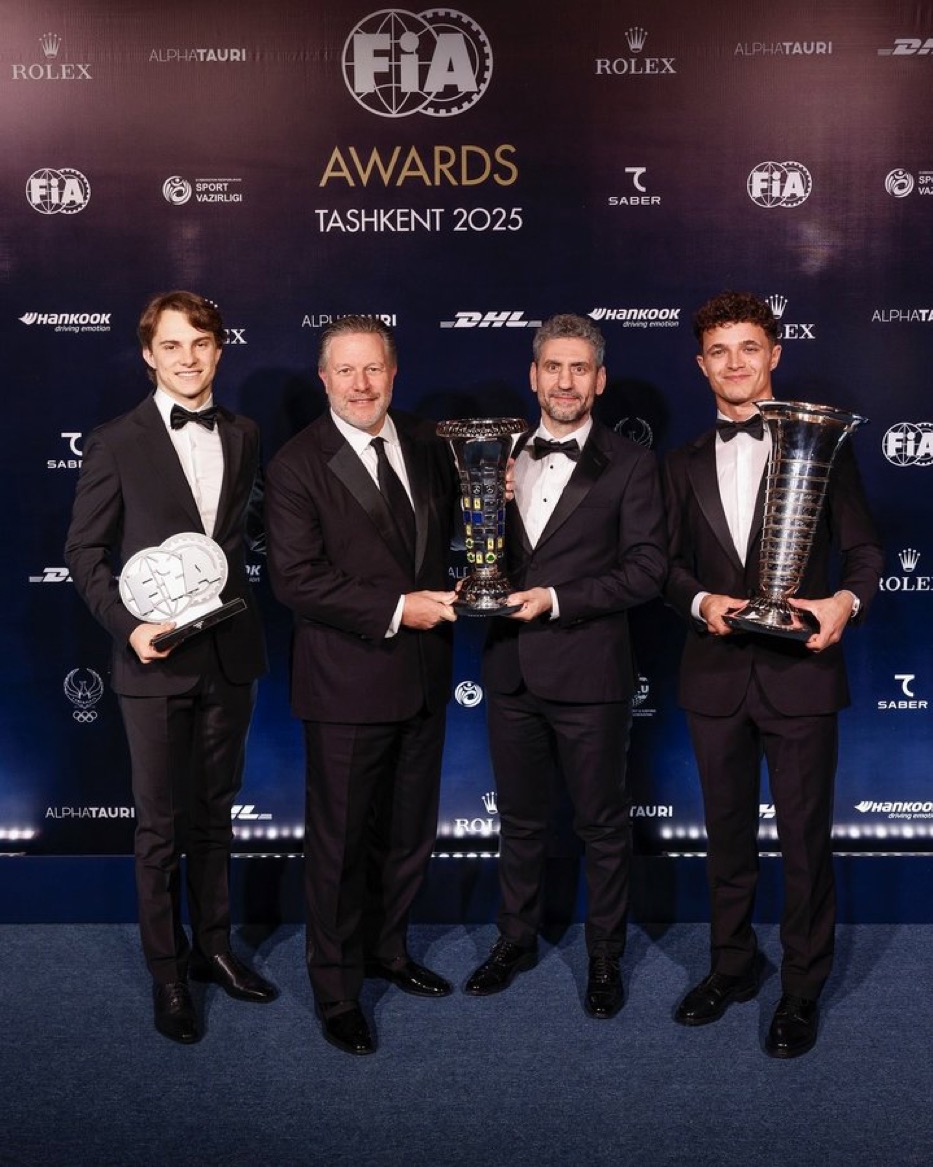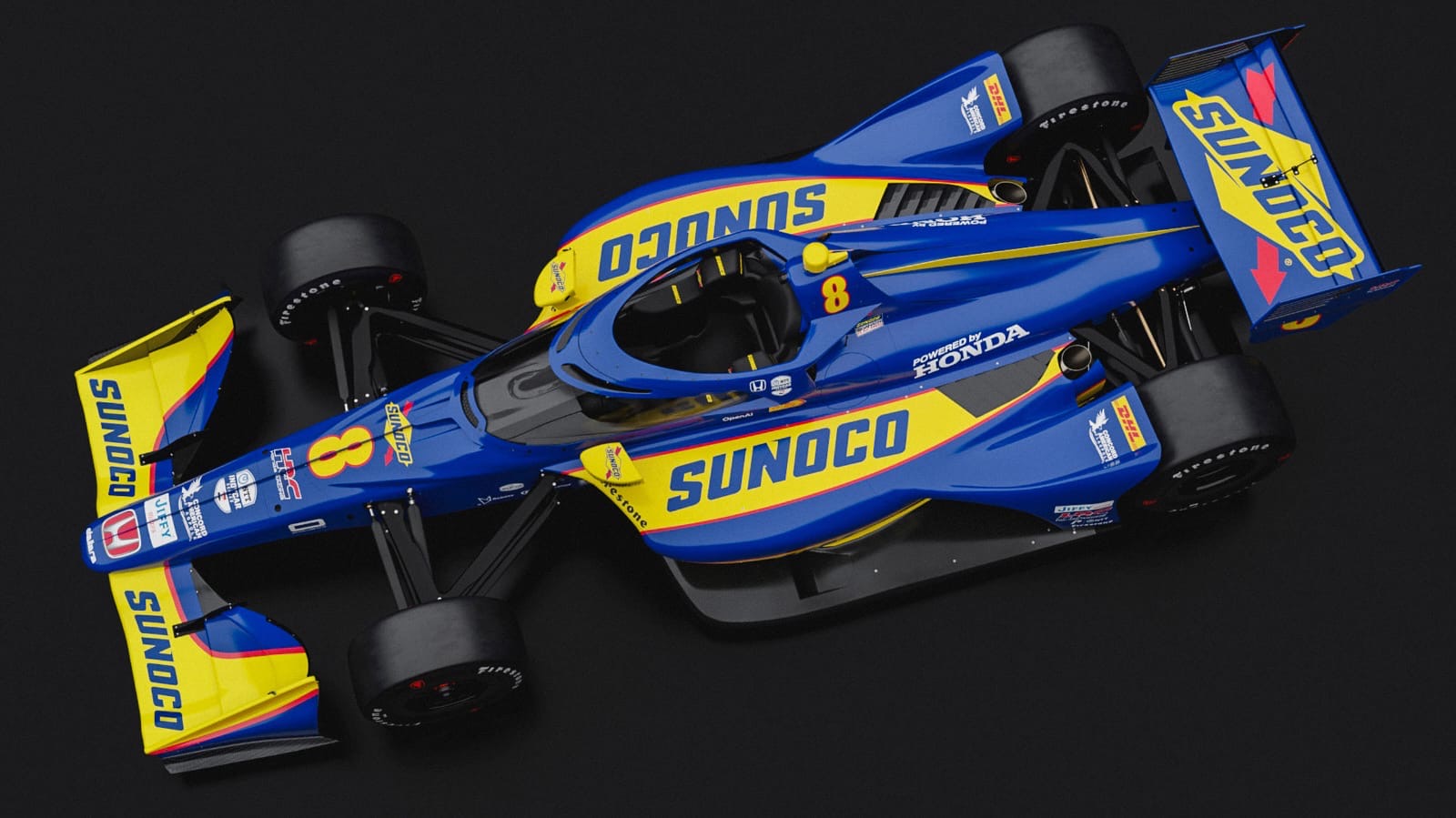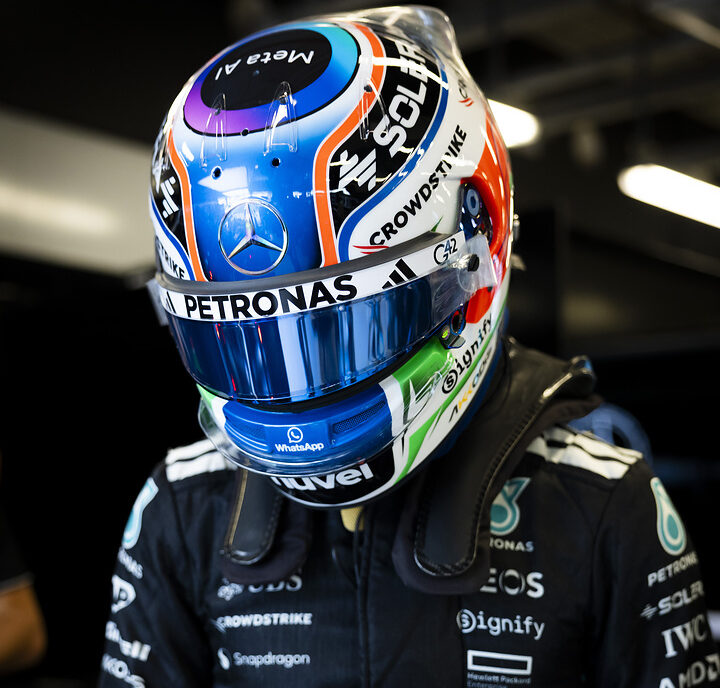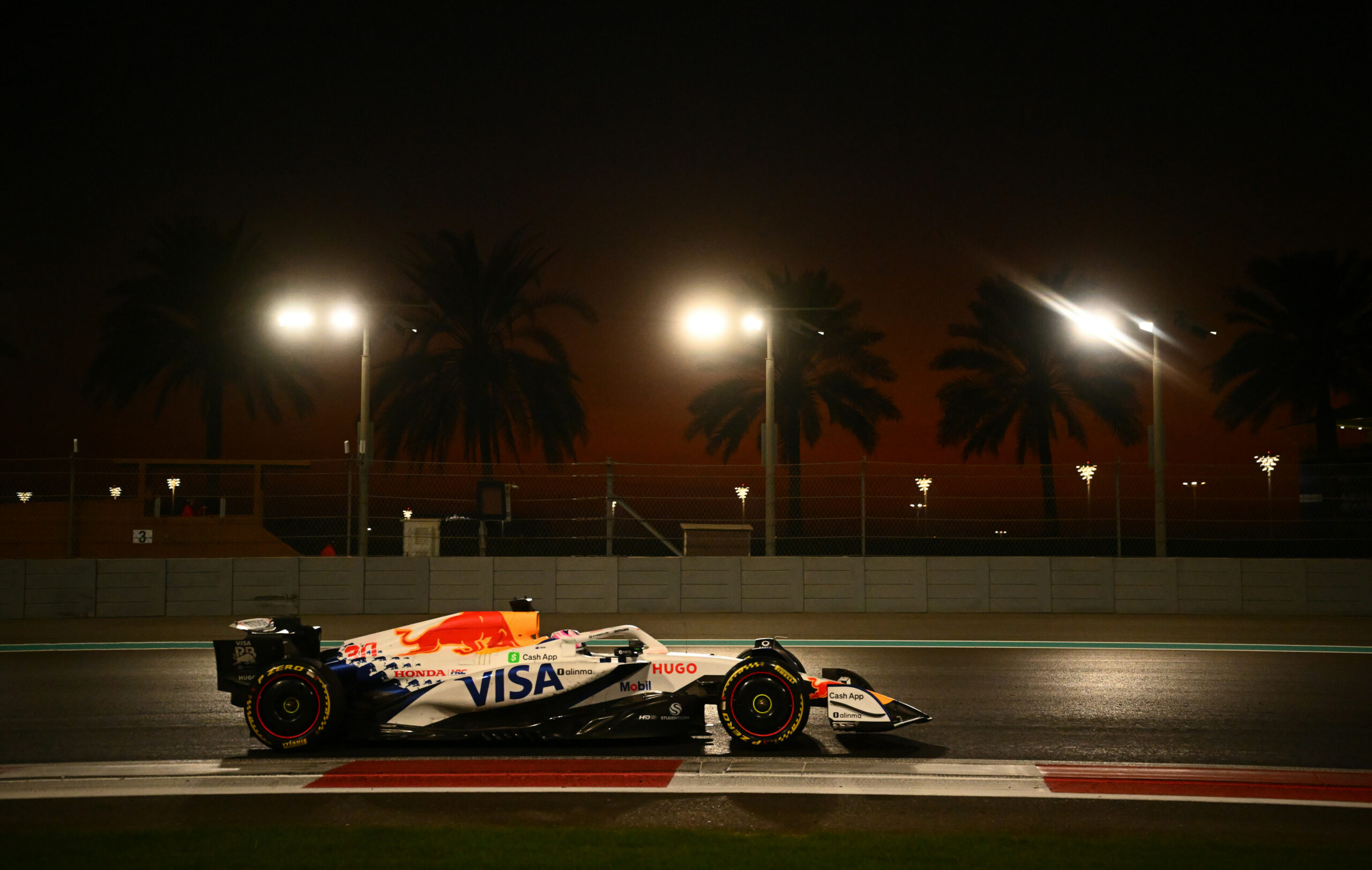Mercedes’ team orders took centre stage at the F1 Mexico City GP. After George Russell dropped behind Kimi Antonelli early on, the team let him through on Lap 41 to chase Ollie Bearman. When the move didn’t bring results and Russell’s tyres began to fade, Mercedes reversed the swap near the end. Antonelli finished P6 ahead of Russell in P7. After the Mexican GP, Mercedes Chief Communications Officer Bradley Lord explained the decisions behind the switch and the timing of it.
Long hesitation for team orders caused the real issue
Lord reflected on a challenging moment during the race when Russell caught up to Antonelli, who was conserving his tyres for a potential one-stop. Russell, faster but stuck in dirty air, began degrading his tyres more quickly. Mercedes’ instinct was to let them race, staying true to their usual strategy. But with Piastri closing in, they eventually called for a swap. According to Lord, the real issue wasn’t the choice to switch the two Mercedes, it was the hesitation during the F1 Mexico City GP. The delay ultimately undermined the outcome.
“It was a really tricky situation. We had Kimi [Antonelli] driving in a way to manage his tyres, managing to a one stop and doing exactly what was being asked of him. George [Russell] obviously under pressure from Piastri, closing up on Kimi and very much feeling that squeeze between Kimi in front, who was managing everything quite carefully, waiting for either Bearman’s tyres to drop off in front to be able to take advantage of that, or for an undercut if we were to convert to a two stop because it was right on the limit.
“George [Russell] obviously coming up from behind, closing that gap and then in the dirty air, using more of his tyres because of that and also feeling that he had pace to get past. So it did take a while to figure that out because initially as a team, we would let our drivers race and that’s what our racing intent calls for. We did eventually decide to swap, and I think in hindsight, regardless of whether we decided to hold position or swap, it was the delay that was the thing that didn’t work out for us.”
General lack of pace during the Mexican GP
Lord acknowledged that by the time Russell finally cleared Antonelli, his tyres had already lost their edge. That left him unable to challenge Bearman ahead. Even after a second stop and a fresh set of tyres, Russell couldn’t make the move. The opportunity was there, but the pace simply wasn’t. On that day, the car didn’t have enough in hand to turn strategy into results.
“By the time George [Russell] was past, his tyres were past their best and he couldn’t get past Bearman. Equally, later in the race on fresh tyres, once he’d made the second stop, he had another chance to attack and was unable to make the move stick then either. So I think on the day, we weren’t quite quick enough to make that happen.”
Overtaking in Mexico as a challenge in itself
Lord admitted that overtaking at the F1 Mexico City GP proved tougher than expected for the Mercedes. A lack of downforce at altitude and heavy dirty air made close racing difficult. More so than at any point since the current regulations began in 2022. The team found themselves caught in a strategic grey zone. In hindsight, Lord saw the lack of decisiveness as the key mistake. Whether they chose to hold position or swap earlier, acting sooner would have been the smarter play.
“It was very difficult to overtake in Mexico with the low downforce, very difficult with the dirty air phenomenon that seems more penalising now than at any part of these rules since 2022. So it was a tricky situation, probably didn’t get everything right in how we managed it and the lesson is really that we should have been more decisive either in asking to hold position or swapping the positions rather than waiting the time we did.”

